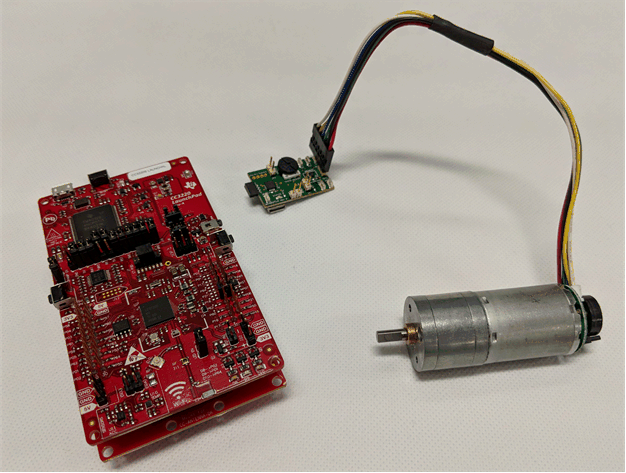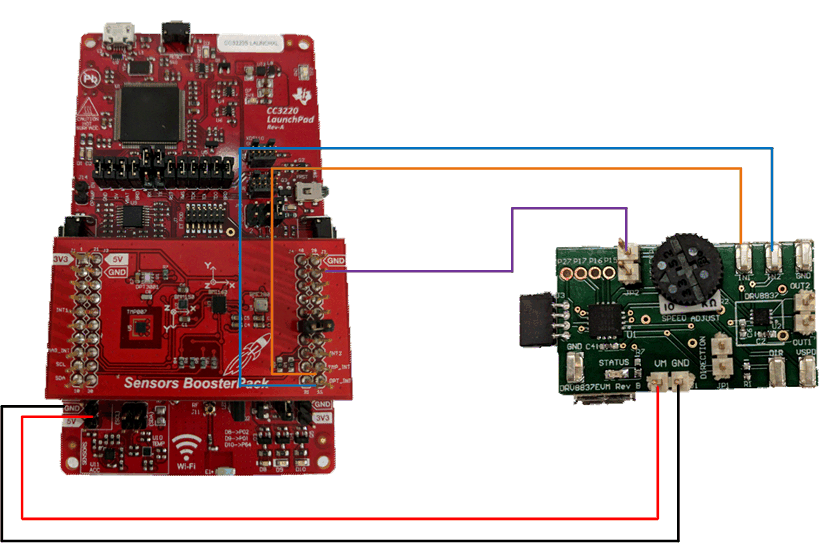TIDUE59A May 2018 – September 2020
- Description
- Resources
- Features
- Applications
- 1System Description
-
2System Overview
- 2.1 Block Diagram
- 2.2 Design Considerations
- 2.3 Highlighted Products
- 2.4 System Design Theory
- 3Hardware, Software, Testing Requirements, and Test Results
- 4Design Files
- 5Software Files
- 6Related Documentation
- 7Terminology
- 8About the Author
- 9Revision History
3.1.1.5 Assembling EVMs
When assembling the TIDC-01005 demo, CC3220S-LAUNCHXL, LAUNCHXL-CC2640R2, and BOOSTXL-SENSORS must all be connected by stacking the 20-pin headers on the EVMs in the following order (with 1 being the top of the stack and 3 being the bottom).
- BOOSTXL-SENSORS
- CC3220S-LAUNCHXL
- LAUNCHXL-CC2640R2
When the LaunchPads and BoosterPack are stacked, ensure the 2-pin jumper is placed horizontally across J4-J6 and J2-J6 on the sensor BoosterPack, to connect pin 7 of the CC3220S and BPRST of the CC2640R2F. Figure 3-5 shows how the assembly appears.
 Figure 3-5 LaunchPad™ and BoosterPack™ Stackup
Figure 3-5 LaunchPad™ and BoosterPack™ StackupLast, connect the stackup to the DRV8837EVM according to Table 3-3 using the jumper wires (connections shown in Figure 3-6). The entire system can be powered by connecting the USB cable to the USB connector on the CC3220S LaunchPad.
 Figure 3-6 Jumper Wire Placement to Connect DRV8837EVM to System
Figure 3-6 Jumper Wire Placement to Connect DRV8837EVM to System